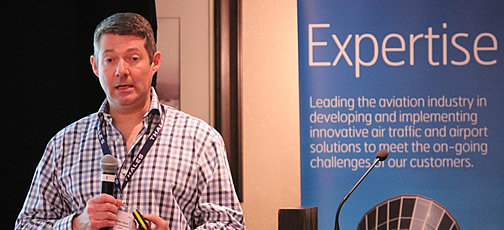The use of automation is common place in our lives today. Whether we’re getting money out of the “hole in the wall” or using a SatNav to help us get to our destination, we take automation for granted.
In the aviation world, automation is also widely used. For example, on the flight deck pilots receive company information via datalink and routinely use the autopilot to fly the aircraft. Automation is used to provide information to the pilot, to control the aircraft and to manage aircraft configurations.
When providing air navigation services, automation is used, for example, to provide air traffic controllers with flight plan information and to give warnings of potential safety risks through the Short Term Conflict Alert system. In this environment, the use of automation is limited to the provision of information / advice to the controller, it does not make decisions. Today, the controller remains firmly in control.
 NATS is leading a programme of work to consider the implications of introducing more automation into air traffic control. There are many benefits to be gained, for example providing earlier warnings of potential conflicts, reducing the likelihood of human error and enabling controllers to handle more aircraft safely.
NATS is leading a programme of work to consider the implications of introducing more automation into air traffic control. There are many benefits to be gained, for example providing earlier warnings of potential conflicts, reducing the likelihood of human error and enabling controllers to handle more aircraft safely.
However, a number of questions need to be addressed. At what point does the controller stop using the automation to provide information / advice and become reliant on the automation to make decisions? When this happens, who is then really in control, is it the controller or is it the automation? Does the controller really understand what the automation is doing and can they step in when necessary to take over the automated functions? What happens when the automation fails or is no longer available? Above all, how do we gain assurance that the air traffic management system continues to be safe in this future world of increased automation?
These questions and many more are being considered by the CANSO Global Safety Conference and will form a key part of CANSO’s Vision 2020. I presented on this topic this morning, setting out some of the issues that need to be considered and leading a workshop with my international colleagues to discuss some of those issues
New safety assurance methodologies will be required to deliver this kind of change but they need to be developed in collaboration with other players in the industry, including safety regulators and equipment manufacturers. Air Navigation Service Providers need to learn from the successes and failures of other industries which are already more reliant on automation.
An underlying principle of air traffic control is that the human is in control. Whilst we don’t think this should change, we do think there are potential benefits to be gained from introducing greater automation to help controllers. In our view, this is a really important topic to debate and we’re pleased to be taking a leading role in stimulating that discussion.
Comments
Please respect our commenting policy and guidelines when posting on this website.



